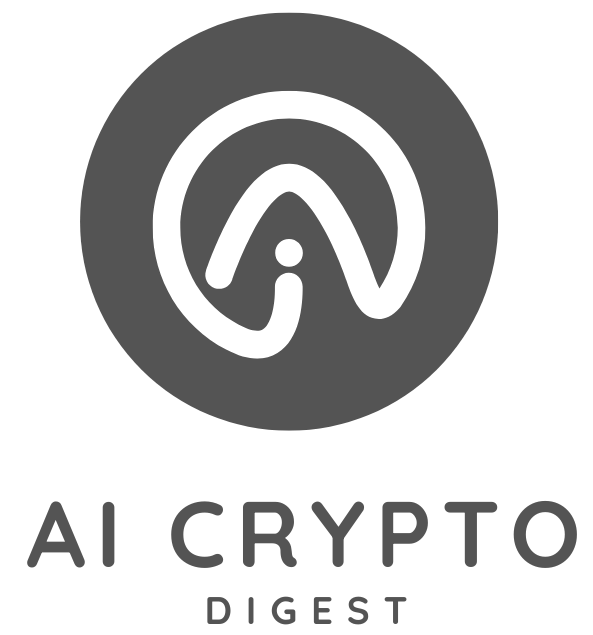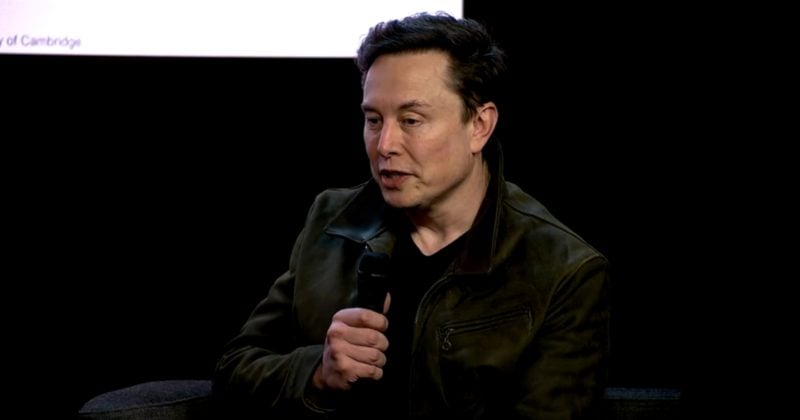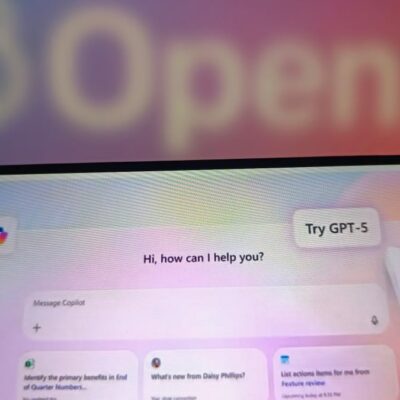Key Takeaways
- Grok 4 by xAI offers a 100-fold improvement in training over its predecessor and includes both single-agent and multi-agent models.
- Elon Musk predicts Grok 4 will invent new technologies by 2026 and potentially discover new physics by next year.
Share this article
Elon Musk has predicted that Grok will start inventing new technologies by 2026 and may discover new physics as early as next year.
The forecast came during a livestreamed demo on X on Wednesday night. Musk said it was only a matter of time.
“I think it may discover new technologies as soon as later this year. And I would be shocked if it has not done so next year. So I would expect Grok to literally discover new technologies that are actually useful no later than next year and maybe [the] end of this year,” Musk said.
“And it might discover new physics next year. And within two years, I’d say almost certainly. So just let that sink in,” he added.
What we know about Grok 4
At a glance
Grok 4, which succeeds Grok 3, features a 100-fold increase in training compared to its predecessor, Grok 2. The model comes in two versions: a single-agent Grok 4 and a multi-agent Grok 4-Heavy that generates multiple reasoning threads.
The system was trained using xAI’s custom-built supercomputer Colossus, which contains 200,000 H100 GPUs. Unlike its predecessor, Grok 4 integrates tools like code, search, and visualization during training.
According to the xAI team, the AI model achieved near-perfect results on standardized tests, including SATs and GREs, across various disciplines. On the Humanities Last Exam, a challenging 2,500-question benchmark, Grok 4-Heavy solved up to 50% of the text-only subset.
xAI plans to connect Grok with advanced engineering tools to enable capabilities such as designing rockets, cars, and medications. The company aims to eventually integrate the AI system with humanoid robots like Tesla’s Optimus.
Advanced voice mode
Grok 4 introduces enhanced voice capabilities, adding new synthetic personalities such as “Sal,” a deep, cinematic voice, and “Eve,” a British female voice.
These voices bring a more human-like texture to interactions, making AI conversations feel less robotic.
Eve, in particular, demonstrated natural conversational flow, even handling interruptions and creative prompts, such as improvising an opera about Diet Coke, with fluency and charm.
Voice latency has also been cut in half, making responses noticeably quicker than other AI assistants.
Since the launch of voice mode, Grok has seen a tenfold increase in active users, the addition of five new voices, and a doubling of end-to-end response speed.
Creative and entertainment potential
Grok 4’s voice mode can produce original musical and poetic content on demand. The team demonstrated this by having Eve perform an operatic piece about Diet Coke.
xAI envisions Grok writing and producing a 30-minute television episode by the end of 2025 and a full-length AI-generated film in 2026. These ambitions will be powered by improvements in Grok’s multimodal systems and video generation capabilities.
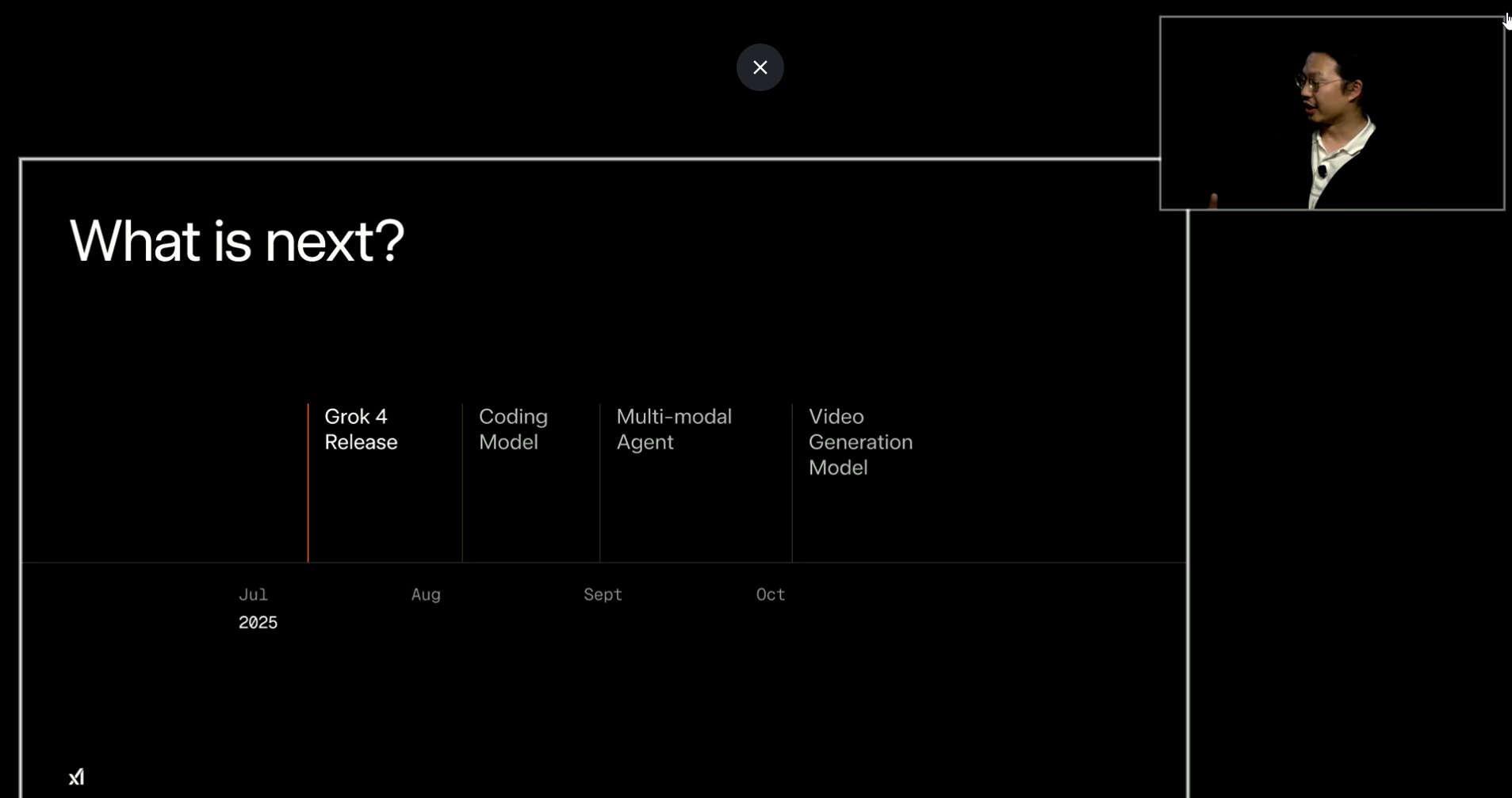

Superior reasoning and benchmark performance
Grok 4 sets a new standard in reasoning benchmarks.
As noted by the team, it scored 15.8% on the private ARC-AGI v2 benchmark, becoming the only model to break the 10% barrier in recent months, doubling the performance of its closest competitor, Claude 3.5 Opus.
xAI described Grok 4 as its next-generation reasoning model, leveraging ten times more compute and integrated tools used for problem-solving.
API availability and developer tools
Launched with API access and a 256K token context window, Grok 4 is already powering business simulations, research, and game development.
In tests, it managed vending machine inventory and strategy autonomously, helped CRISPR research, and enabled solo game developers to build playable prototypes in hours.
Multimodal and future capabilities
Currently, Grok 4’s ability to understand image, video, and audio inputs is limited, according to the team. However, major upgrades are on the horizon.
Version 7, due in July 2025, will improve image, video, and audio understanding. By 2026, Grok is expected to generate 3D games, interactive videos, and real-time media content using large-scale video models.
Coding specialization
To support developers more deeply, xAI is preparing a specialized coding model, expected to launch in late July or early August 2025.
This model will further enhance Grok 4’s ability to handle software engineering tasks, building on its existing strength in automating repetitive workflows like asset sourcing.
Real-world impact and scalability
Grok 4 shows potential to operate at scale, running simulated businesses and integrating with enterprise workflows. It’s already being adopted in research and finance, with availability on major cloud platforms from May 2025.
Accessibility and subscription
Grok 4 access was limited during the livestream to prevent overload, but expanded availability is being rolled out soon.
Full access requires an X Premium+ subscription, while those seeking maximum performance can upgrade to SuperGrok Heavy at $300/month.
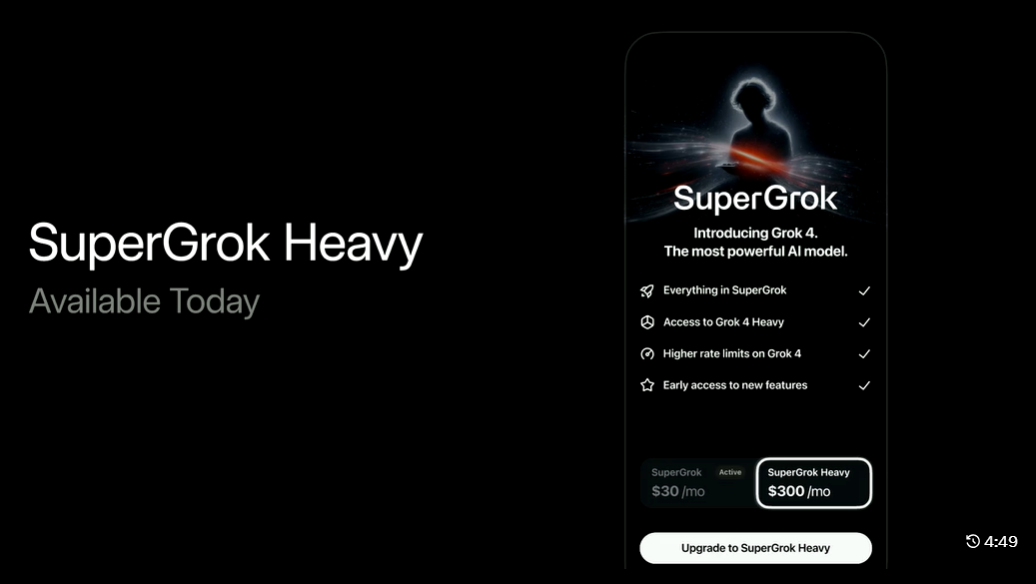

Built on the Grok 4 Heavy model, it offers higher rate limits, early feature access, and all the benefits of the standard $30/month SuperGrok plan, tailored for those seeking top-tier performance.
Share this article
